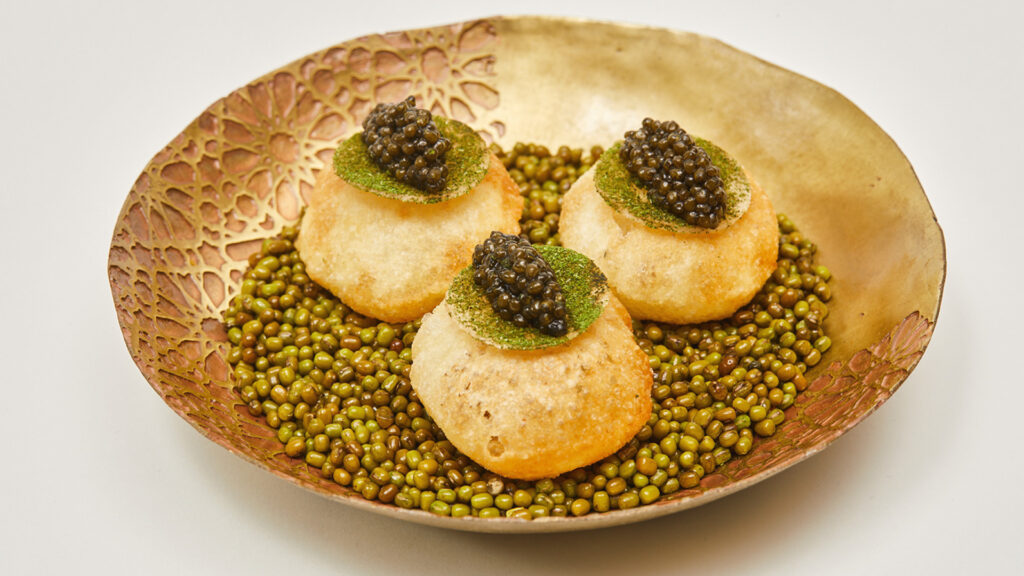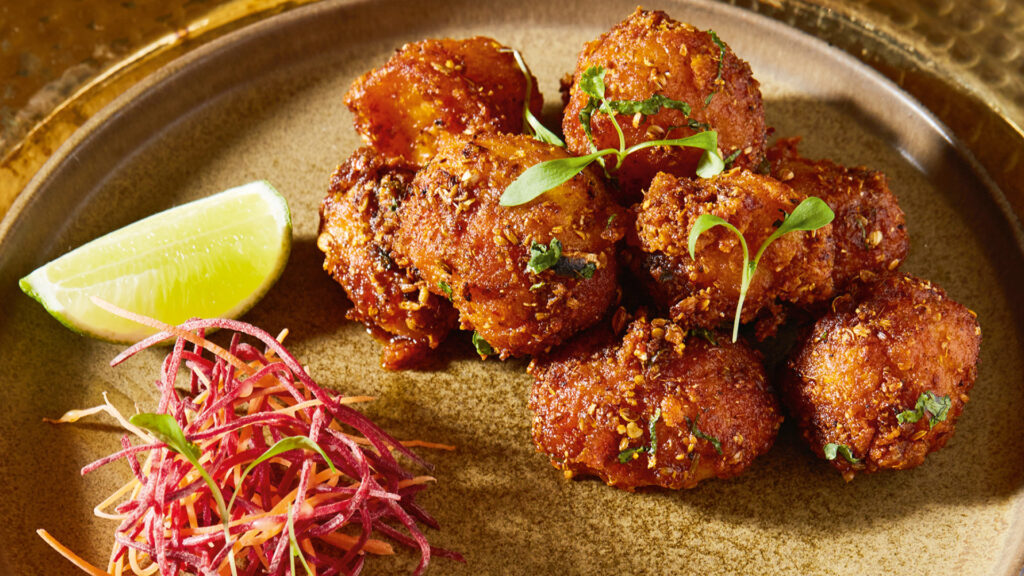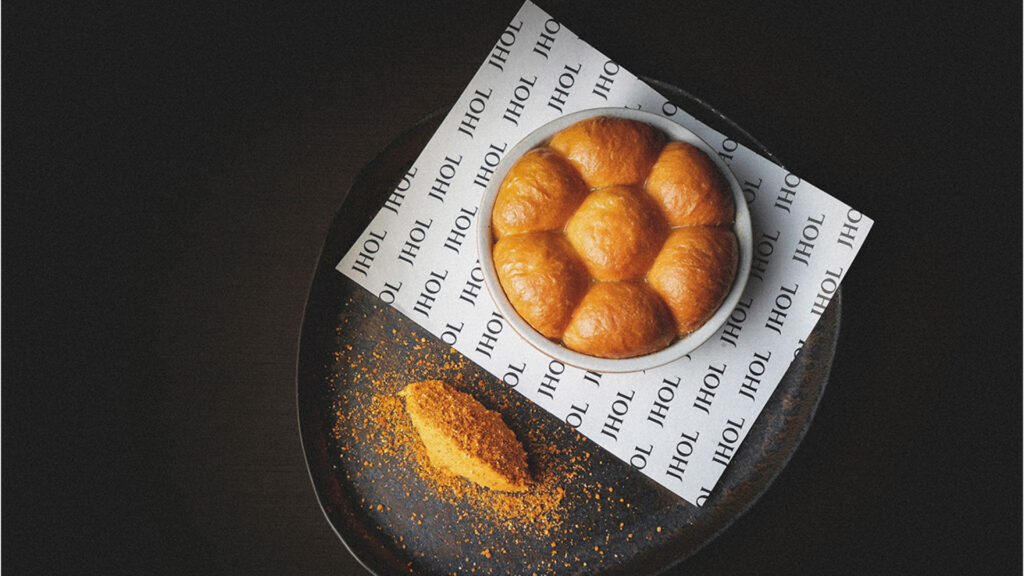Indian food continues to take giant strides in its popularity on international platforms. We find out why people the world over just can’t seem to get enough of that desi flavour!
By BINDU GOPAL RAO
The recent James Beard awards made news in India as Chai Pani, a North Carolina-based eatery serving quintessential Indian street food like chaat and vada pav (Indian-style potato burger), won the coveted ‘America’s Most Outstanding Restaurant’ award. And Chintan Pandya, Mumbai-born chef of the New York-based Dhamaka restaurant, won the ‘Best Chef: New York State’ honour. Talk about a flavourful explosion! These accolades are a true testament to the successful Indian food story making waves across the world. And we’re craving
to ride this culinary high!
We Can(nes) Do It

India was the ‘Country of Honour’ at the recently concluded 75th edition of the Festival de Cannes. Chef Manu Chandra, founder and partner of Single Thread Catering (part of Manu Chandra Ventures), was invited by the Indian Ministry of Information and Broadcasting to curate and manage the catering for the festival’s India Pavilion. He did so by creating a menu that amalgamated Rajasthani flavours with classic French cooking techniques. Intrigued? Think pyaaz (onion) ki kachori wrapped in croissant dough, roulade of lamb shoulder drizzled with laal maas (spicy mutton dish) sauce, paniyarams (pan-fried rice lentil dumplings) in the form of French madeleines glazed with podi
(a spice mix) mixed in decadent French butter, Champaran-style raw jackfruit folded into little samosas served with a classic aioli, and vada pav sandwiched in a pillowy-soft French brioche. Is your mouth watering yet? “The world is waking up to bolder flavours and, when you break away from the ubiquitous or formulaic and represent your cuisine unabashedly, the response and acceptance will always be overwhelming. The days of the tikka masala as being the only representation of Indian food in the West are now in the past. The West, and the rest of the world for that matter, has woken up to the depth, complexity, and downright deliciousness that Indian food has to offer,” says Chandra.
Indian, but with a Local Flair

Indian cuisine is known for its inherent flavour and balance of different textures. And with sustainable choices leading the world towards vegan and vegetarian options, it seems to fit the bill perfectly, naturally offering tastier, gluten-free options in the way of staples like dosas, as well as curries and sauces that use vegetable roots as thickening agents. Hari Nayak, chef, restaurateur, author, and culinary director, Sona, New York, and Jhol, Bangkok, says, “It’s important to keep in mind the local palate when designing the menu. At Jhol, I know Thai people love the balance of local flavours and, hence, at our upscale South Indian coastal restaurant, we focus on using regional ingredients. For instance, we use morning glory, an indigenous Thai green, to make a dal dish at Jhol. Likewise, at Sona, to make the typical Punjabi saag, I use Swiss chard and broccoli, and crumble paneer (like feta) with a hint of seasoning.” Interestingly, Nayak says that naming the dish’s components after local ingredients also increases their appeal as they strike a chord with the people. He adds, “I make dal makhni with South American beluga lentils that are lighter than traditional urad dal. Similarly, our bhelpuri is made with puffed buckwheat that is used to make bread here.”
Evolving Plates
The narrative of Indian food is changing, as well. A decade ago, it was all about chicken tikka masala, vindaloo, and tandoori bread. But that’s a thing of the past. “Indian cuisine has so much to offer that people do not just settle for a ‘curry’, today,” says Sameer Taneja, executive chef, Benares Restaurant and Bar, London. “They understand better the nuances between dishes made in different regions, such as the difference between Mangalorean sambhar and sambhar from Telangana. The more people travel to India, and the more they taste the food in different restaurants, the more they understand the culture and how much more it has to offer than simply curry or chilli.”
Breaking Stereotypes

While retaining its popular status, Indian food, nevertheless, has a reputation for being too spicy for international palates. Roop Partap Choudhary, executive director, Noor Mahal, Karnal, and founder, Colonel Saab, London, aims to break that notion and confirm to diners that Indian fare is, in fact, a matter of preferred flavours. “Indian food is not spicy if you don’t want it to be. We would like more foodies to explore our cuisine and try out different dishes,” he says. Recognising the appeal of the cuisine, an increasing number of international chefs are experimenting with Indian dishes by using various herbs and spices to cater not only to the large population of Indians abroad, but to local palates, as well. All that’s needed are some creative adjustments. For instance, a significant section of the menu at the Chiva- Som Resort, Hua Hin, comprises Indian dishes. Customisation options allow diners to add or limit ingredients as per their taste preferences. Chef Sinchai, executive chef at the hotel, says, “We personalise our guests’ dietary requirements. The most important ethos that must remain intact is the usage of quality Indian herbs and spices, which adds to the overall flavour.”
Blessed with an immeasurable wealth of ‘flavour’, is it any wonder that Indian cuisine has managed to entice culinary connoisseurs globally?
Related: Here’s Why Goa Is Emerging As The New Gourmet Capital Of India




